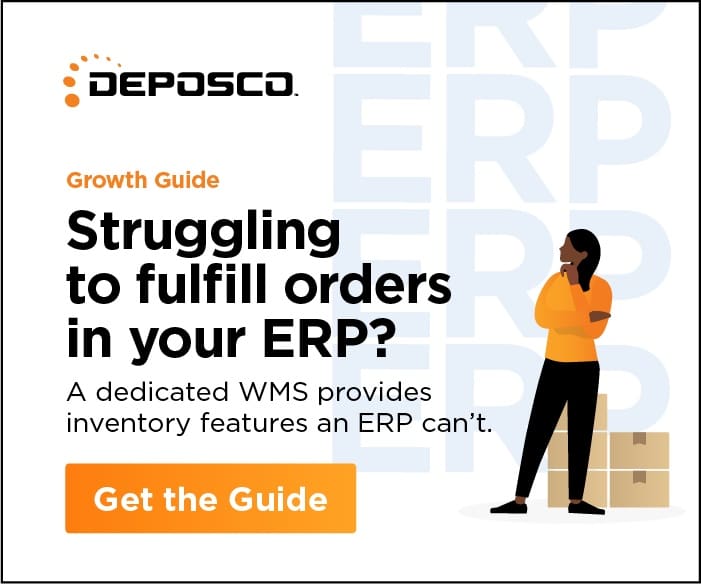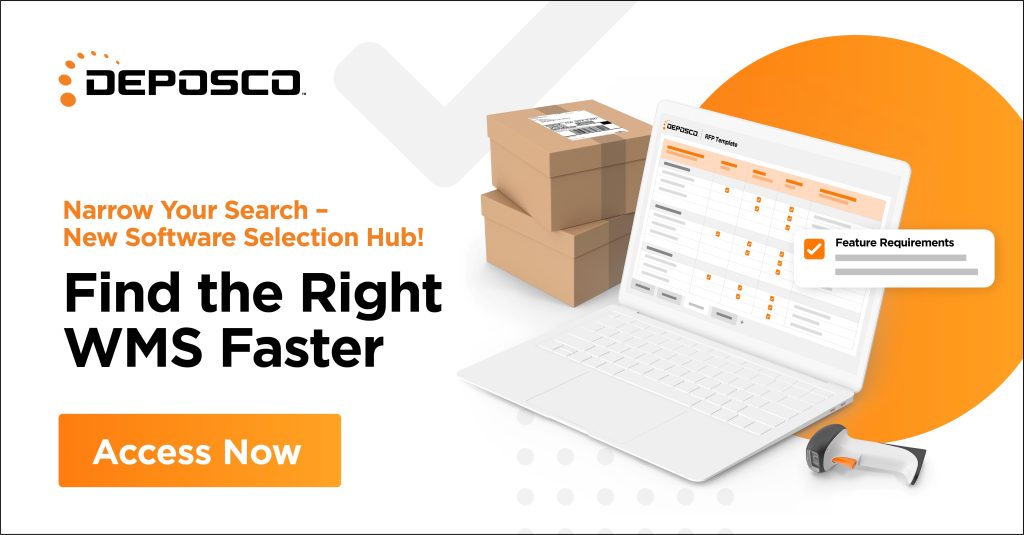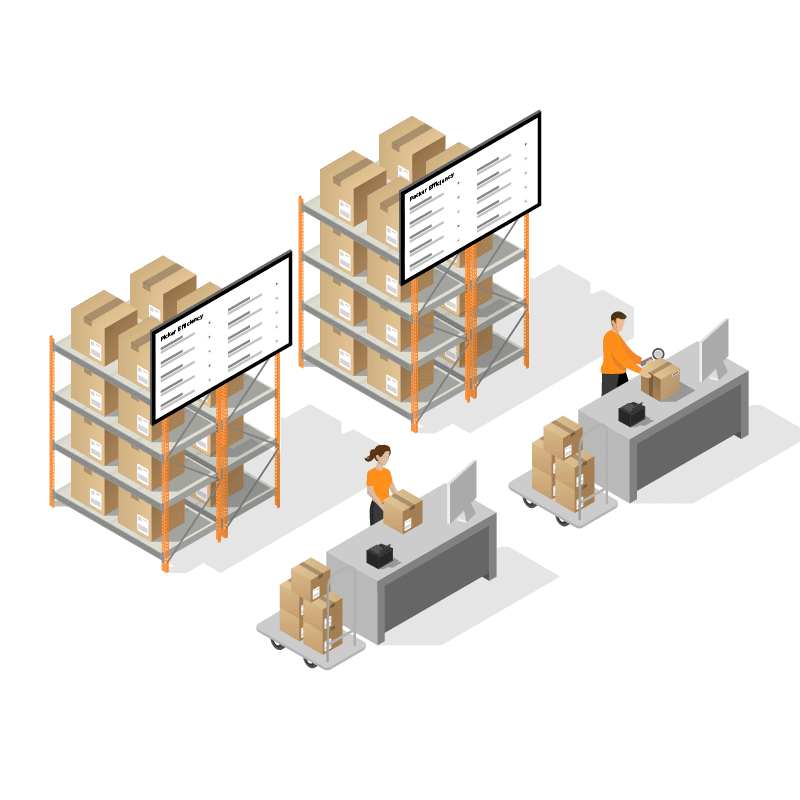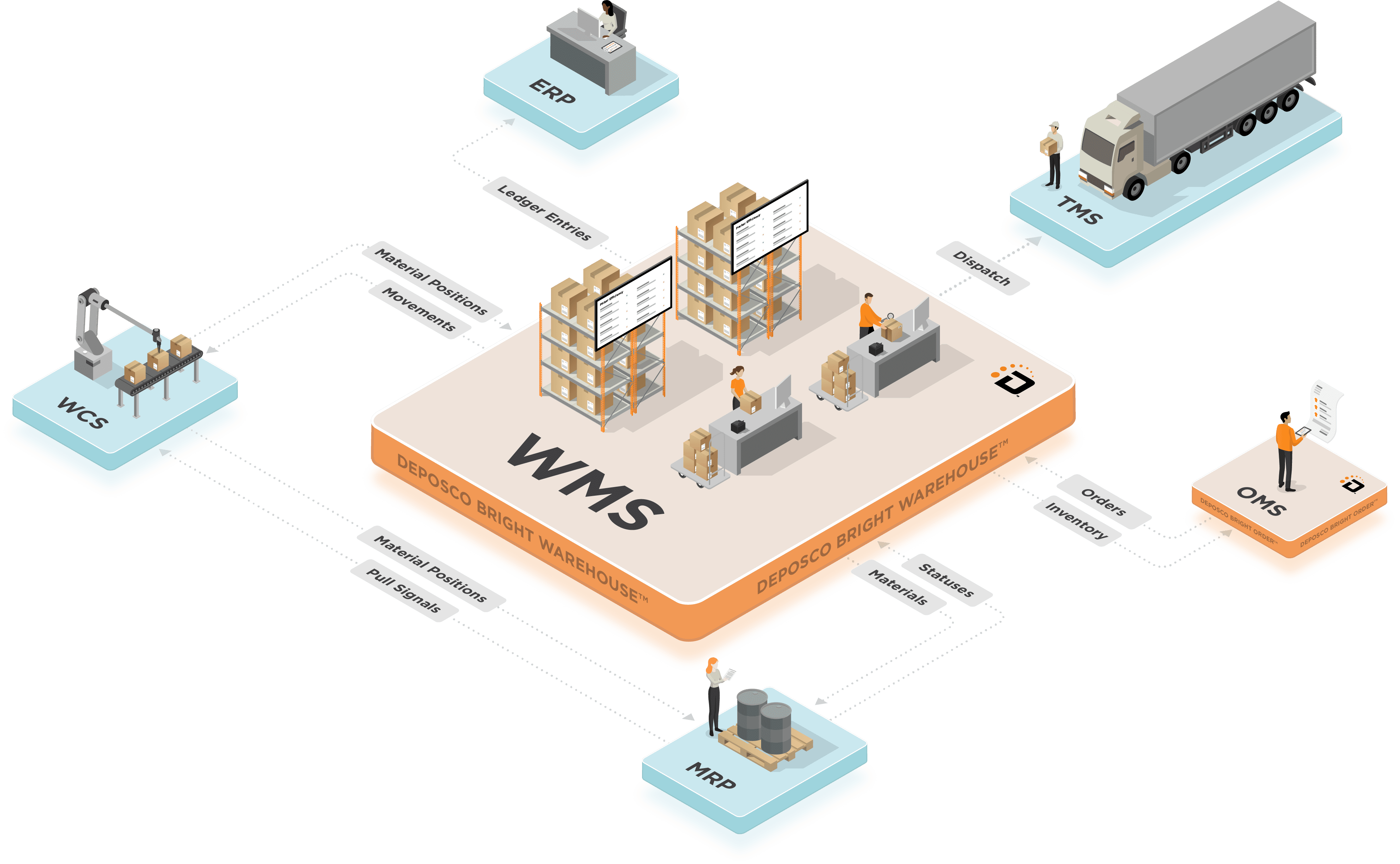The types of warehouse software aren’t straightforward
Technology acquisition in Operations is a key driver of successful growth. You reach a point where the way you did it before can’t go any further. What got you here won’t get you there. When it comes to understanding all the types of warehouse management software for your company, you have many options.
The acronyms start to look like Alphabet Soup.
WMS, WCS, WES, MRP, ERP, OMS, TMS
 Some of these focus on inventory fulfillment, and some on material handling. Some try to do everything.
Some of these focus on inventory fulfillment, and some on material handling. Some try to do everything.
Efforts to compare warehouse software tools can be like going to the supermarket hungry: you buy way more than you need, without even knowing it. It is easy to get a bundle of software, but will you use everything this year? Next year? Ever?
Shelfware is a term for software that is collecting dust in the IT department. Bought with the best of intentions, but never deployed.
The key is: what warehouse software do you need now vs. later?
Not generally accepted terms
Understanding what the terms mean is important. The current labels for best warehouse software don’t clearly communicate their use cases.
The terms are not fixed and do not denote minimum requirements. You can start with the generic label, but then a careful look into your firm’s needs should drive the buying process.
Types of warehouse software: the ABCs
Here is a visual guide to the various types of warehouse software to help you select the best one for your business:
Warehouse Management System (WMS)
A warehouse management system is a software platform that focuses on inventory-impacting processes. Traditionally, the WMS is the system of record for warehouse inventory management. It covers functions around receiving, storing, validation, picking, and shipping.
Early warehouse management systems may not cover Direct-to-Consumer (DTC) shipping and focus strictly on pallet/case picks and business-to-business transactions. Legacy WMS systems are considered NOT real-time warehouse software.
Warehouse Control System (WCS)
The WCS handles automation systems in the warehouse. This broadly coordinates Materials Handling Equipment (MHE). It looks at conveyance, sorters, robotics, and other automation features in the warehouse.
The warehouse control system is the Traffic Cop of the warehouse. It focuses on the movement of inventory from storage to various stations in the warehouse.
The WCS is considered additive to the WMS and will send inventory disposition signals back to the WMS system for record keeping. This software operates in real time.
Warehouse Execution System (WES)
The WES is a more recent term that combines full or partial components of both the WMS and the WCS.
Carefully assessing the features of an individual provider’s WES solution is critical. It is not a standardized term that includes standardized functions.
Material Requirements Planning (MRP) System
The MRP is warehouse software specialized for tracking goods from raw materials to “Work in Progress” to finished goods in a way more WMS, WCS, and WES systems are not designed to address.
MRPs include formulas for sequencing and pegging, pull-based replenishment based on a Bill of Materials (BOM), and the continuous flow of materials into goods based on a production schedule.
Enterprise Resource Planning (ERP) System
 ERP systems are usually the first coordination software a company acquires. The ERP is focused on the financial tracking of a firm. One of the primary uses is tracking purchases and sales orders.
ERP systems are usually the first coordination software a company acquires. The ERP is focused on the financial tracking of a firm. One of the primary uses is tracking purchases and sales orders.
One of the appeals is that many offer modular business functions. You can enable basic functionality as needed or purchase them in a bundle. The important differentiation is that most of these are feature-light when compared to purpose-built warehouse software like a WMS.
Often small business and mid-market companies leverage their ERP’s inventory fulfillment module to delay acquiring the appropriate solutions.
Order Management System (OMS)
An order management system, often coupled with a Distributed OMS (DOM), focuses on executing orders, especially in multi-channel fulfillment.
The focus is on finding the optimal way to fulfill orders based on cost considerations and inventory availability. Order management software can process both business-to-business (B2B) and Direct-to-Consumer orders.
When the OMS is distributed, it can consider the inventory position in the entire network, including stores. This means that beyond just focusing on end-to-end order processing, the DOM warehouse software ensures that the ideal location is selected for processing.
Related: OMS vs. DOM, What is The Difference?
Transportation Management System (TMS)
Transportation Management Systems are built to move materials and goods into and out of facilities. Their focus is providing features around scheduling and tracking shipments. Advanced TMS warehouse software includes optimization around loads and dispatch scheduling.
The volumes that are fed into the system come from other solutions. Inbound orders are created and tracked by procurement systems. Outbound orders are generated by the WMS or order management system.
A TMS is not a replacement for any inventory system. It can track limited metrics such as Inventory In Transit and can calculate estimated arrival times.
Now, which type of warehouse software do you need?
 You know what these terms mean, but what is the best warehouse software for your needs?
You know what these terms mean, but what is the best warehouse software for your needs?
Let’s start with business introspection. Ask these questions about your immediate needs, identify the gaps, and add a reasonable amount of growth projection:
- Is my facility manufacturing a product? You want to use an MRP. A WMS can support these warehouse software systems for managing inventory. However, the complexity of process-based manufacturing requires specialized systems.
- Is my facility storing the finished goods? A WMS system is the appropriate choice. While some WCS software has inventory tracking functions, these systems will not be as robust. If considering a WES, make sure it has the warehouse inventory management features you need.
- Will my facility handle order processing and direct sales? Modern warehouse management systems that incorporate order management software and DOM functionality are ideal for this function.
- Are we incorporating Material Handling Equipment (MHE) at the facility? If you are not storing inventory, a WCS might be sufficient. The preferred model is to have both a WMS and WCS with clear responsibility delineation.
- Will the system handle labor allocation and tasks? WMS systems handle task allocation very well. When scaling, think about which tasks should remain with workers, and which should be handled by warehouse automation and thus a WCS.
- Am I considering Internet of Things (IoT) devices for monitoring and response? While some WMS systems can incorporate limited IoT devices, WCS software is more suited to accommodate them. WMS systems support a lot of tagging, which focuses on inventory such as RFID. Ensure that you know the use case you want to solve here.
- Am I planning on deploying Robotics in the warehouse? Running a blend of WMS warehouse software for inventory management that supports integration to a WCS is the best of both worlds. Avoid buying warehouse software that limits your options when acquiring robotics by supporting only a few standards.
- Do I have a SaaS preference? Warehouse management systems like Deposco are fully available in the cloud. Real-time systems like a WCS will function best on-premises because of the real-time decision-making of control systems. This directly impacts staffing and acquisition costs, for good or bad.
There’s also the “trusty” option of just using your ERP. We’ve dedicated an entire article on why that’s a bad idea: Inventory Fulfillment in ERP vs. WMS Software, What’s the Difference?
Which questions apply?
Which ones are priorities?
This will vary from business to business, site to site.
Bottom line
Find the best warehouse software for you.
The best advice I can give for this is: to ask, which one best simplifies my supply chain? If you have a ‘wild west’ of fragmented systems in different locations, you can expect problems. Getting a system that puts everything together in one place makes your job easier and reduces risk.
Make sure your supply chain execution solutions partner has a blueprint for current and future success without allowing you to overbuy.


